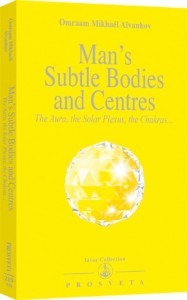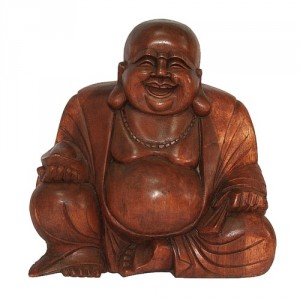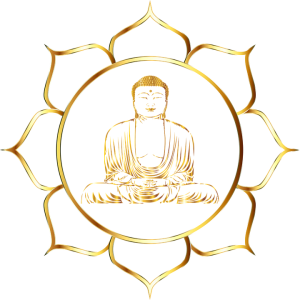The solar plexus
 ‘The solar plexus is an extremely important centre, and we must be careful to avoid whatever makes it tense, because this in turn leads to the contraction of the blood vessels and other ducts and canals of the body. And if the blood and other body fluids can’t circulate fast enough, waste products build up on the walls of the ducts and can lead to serious health problems. The thing which most seriously upsets the solar plexus is the chaotic, tempestuous manifestation of disorder in the astral body: fear, anger, jealousy and sexual passion. And as the solar plexus is the reservoir of our life forces, this loss of harmony deprives us of our magnetic energies. When you receive a severe shock or a sudden fright, you can feel that all the strength has gone out of you; your legs give way beneath you, your hands tremble and your head feels completely empty. This is a sign that your solar plexus has been drained of its energy. So, as you see, it is possible to empty the solar plexus of its forces, but it is also possible to replenish these forces, and it is this that a disciple must learn: how to replenish his solar plexus.’
‘The solar plexus is an extremely important centre, and we must be careful to avoid whatever makes it tense, because this in turn leads to the contraction of the blood vessels and other ducts and canals of the body. And if the blood and other body fluids can’t circulate fast enough, waste products build up on the walls of the ducts and can lead to serious health problems. The thing which most seriously upsets the solar plexus is the chaotic, tempestuous manifestation of disorder in the astral body: fear, anger, jealousy and sexual passion. And as the solar plexus is the reservoir of our life forces, this loss of harmony deprives us of our magnetic energies. When you receive a severe shock or a sudden fright, you can feel that all the strength has gone out of you; your legs give way beneath you, your hands tremble and your head feels completely empty. This is a sign that your solar plexus has been drained of its energy. So, as you see, it is possible to empty the solar plexus of its forces, but it is also possible to replenish these forces, and it is this that a disciple must learn: how to replenish his solar plexus.’
Methods
-- ‘A tree is a storehouse of energies gathered both from the sun and from the earth, and man can draw on those energies. Choose a tall, sturdy tree, stand with your back to it, your left hand behind you with the palm touching the trunk of the tree, and at the same time, place the palm of your right hand on your solar plexus. Then concentrate mentally on the tree; talk to it, ask it to share some of its energy and strength with you. You will receive these energies with your left hand and pour them into your solar plexus with your right hand. It is a kind of ‘energy transfusion.’
-- ‘You can also strengthen your solar plexus by watching and listening to running water, a fountain, a spring or a waterfall.’
‘If you go to India one day it may surprise you to see that many saddhus and yogis are noticeably pot-bellied, although they eat hardly anything. And you will probably have noticed that almost all the statues of Buddha or other sages portray them with a generous paunch. The reason for this is that, in an Initiate, a well-rounded paunch is a sign of power and strength, an indication of the spiritual reserves he has accumulated thanks to years of special breathing exercises. Prolonged breathing exercises develop this region of the body because it is there that certain elements that enable an Initiate to heal sickness and disintegrate harmful influences are stored. A pot-belly, therefore, can be the result either of a materialistic way of life or of a very spiritual way of life. If a man’s face reveals that he is only interested in eating, drinking and sleeping, then, of course, his corpulence is a bad sign; it indicates a coarse, materialistic, sensual person. But if he is pure, clairvoyant and intelligent, then his stoutness shows that he has substantial reserves which he can call upon to heal others and do a lot of good things’
Chakras
‘The chakras all differ from each other in colour and the number of their petals, and this means that the frequency and intensity of their vibrations are different, the divinities that dwell in them are different, and above all, on awaking, each bestows different powers and virtues on a human being. Muladhara bestows life force; Svadhishthana, creative powers; Manipura, collective consciousness; Anahata, universal love; Vishuddha, wisdom; Ajna, clairvoyance, and Sahasrara, omnipotence and total freedom. It is said that a divinity or Shakti dwells in each chakra. Their names (in ascending order) are: Dakini, Rakini, Lakini, Kakini, Shakini and Hakini. When Kundalini has completed her ascent through the chakras, she has reached her goal and is united with Shiva, the masculine principle. As the union of the masculine and feminine principles, the head and tail of the serpent, is consummated, it produces a blinding light, and henceforth the yogi has reached the summit; he is totally free.’
Methods
-- ‘Now, let me give you a very simple exercise to help you to develop the throat chakra, Vishuddha: from time to time, devote your whole meditation simply to listening. Don’t think at all. Just try to listen, try to hear the voice of wisdom, the voices of the spirits of light. Of course, at your first attempts you will probably not hear anything, but if you persevere you will eventually hear the inner voice, the gentle voice of God, that voice which is so faint and subtle that it is sometimes called the voice of silence. When you hear this voice your whole being will vibrate and tremble—words are powerless to describe the experience.’
-- ‘A method you can use to develop Ajna is to imagine that you are looking with your inner eye at the earth, the sky and the whole of space, with all its countless inhabitants, that you can see all worlds, both visible and invisible. You simply gaze at them with great love: that is all that is necessary to begin to awaken your spiritual vision.’
-- ‘I have already given you some simple methods to be used in working with Vishuddha and Ajna, but I should mention another one which applies to all the chakras, and that is singing. Singing produces waves which cause man’s subtle centres to vibrate. Obviously it is not a question of singing just anything or anyhow. If you want to stir your dormant chakras to wakefulness through song, you must sing profound, mystical songs which produce the right kind of vibrations, and you must be conscious, at the same time, of the spiritual forces they represent.’





